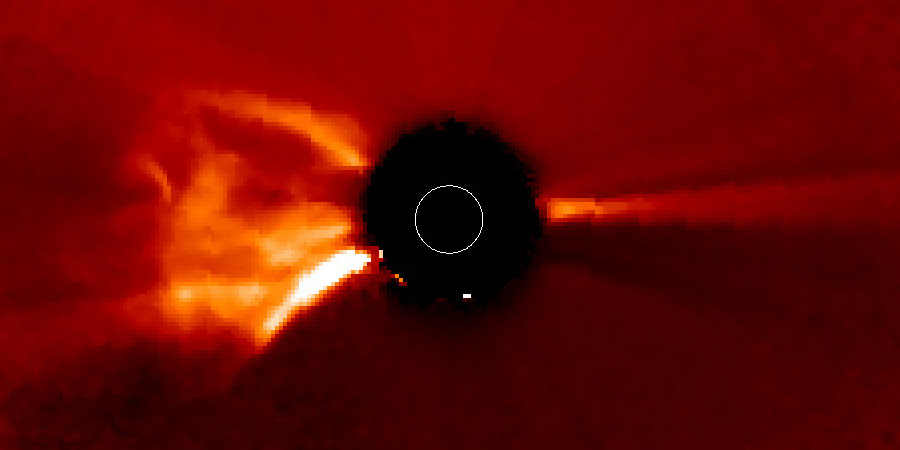Far side fireworks
Wednesday, 1 May 2019 08:48 UTC

Not much to report on the earth-facing side of the moment but the Sun's far side has sprung back to life with two distinct areas firing off eruptions.
Yesterday there were two eruptions from two separate areas on the fire side (but one eruption was way bigger than the other) and this morning there was another minor eruption between 4 and 5 UTC. All of these events produced coronal mass ejections (not aimed at Earth of course) but there was one coronal mass ejection that was by far the largest. On the images from SOHO we saw a clear halo coronal mass ejection but because it came from the far side the blast is aimed away from us. Like we said, these eruptions are not going to impact Earth in any way right now but should these regions survive for two more weeks they could be facing Earth and launching eruptions towards us. Fingers crossed!
This image that we posted on Twitter and Facebook shows the two eruptive areas as seen by STEREO Ahead EUVI 195 and the largest of the three coronal mass ejections as seen by STEREO Ahead COR2.
Two area's on the Sun's far side seem to have sprung into life. Three eruptions took place today (thus far) and yesterday with one being by far the largest which you can see on the image below. Nothing that will affect us now but this area faces Earth in 2 weeks. Fingers crossed! pic.twitter.com/yBuODVV513
— SpaceWeatherLive (@_SpaceWeather_) May 1, 2019
Thank you for reading this article! Did you have any trouble with the technical terms used in this article? Our help section is the place to be where you can find in-depth articles, a FAQ and a list with common abbreviations. Still puzzled? Just post on our forum where we will help you the best we can!
Latest news
Latest forum messages
More topicsSupport SpaceWeatherLive.com!
A lot of people come to SpaceWeatherLive to follow the Sun's activity or if there is aurora to be seen, but with more traffic comes higher server costs. Consider a donation if you enjoy SpaceWeatherLive so we can keep the website online!

Space weather facts
| Last X-flare | 2025/03/28 | X1.1 |
| Last M-flare | 2025/04/01 | M2.4 |
| Last geomagnetic storm | 2025/03/27 | Kp5 (G1) |
| Spotless days | |
|---|---|
| Last spotless day | 2022/06/08 |
| Monthly mean Sunspot Number | |
|---|---|
| February 2025 | 154.6 +17.6 |
| April 2025 | 147 -7.6 |
| Last 30 days | 128.8 -21.8 |


